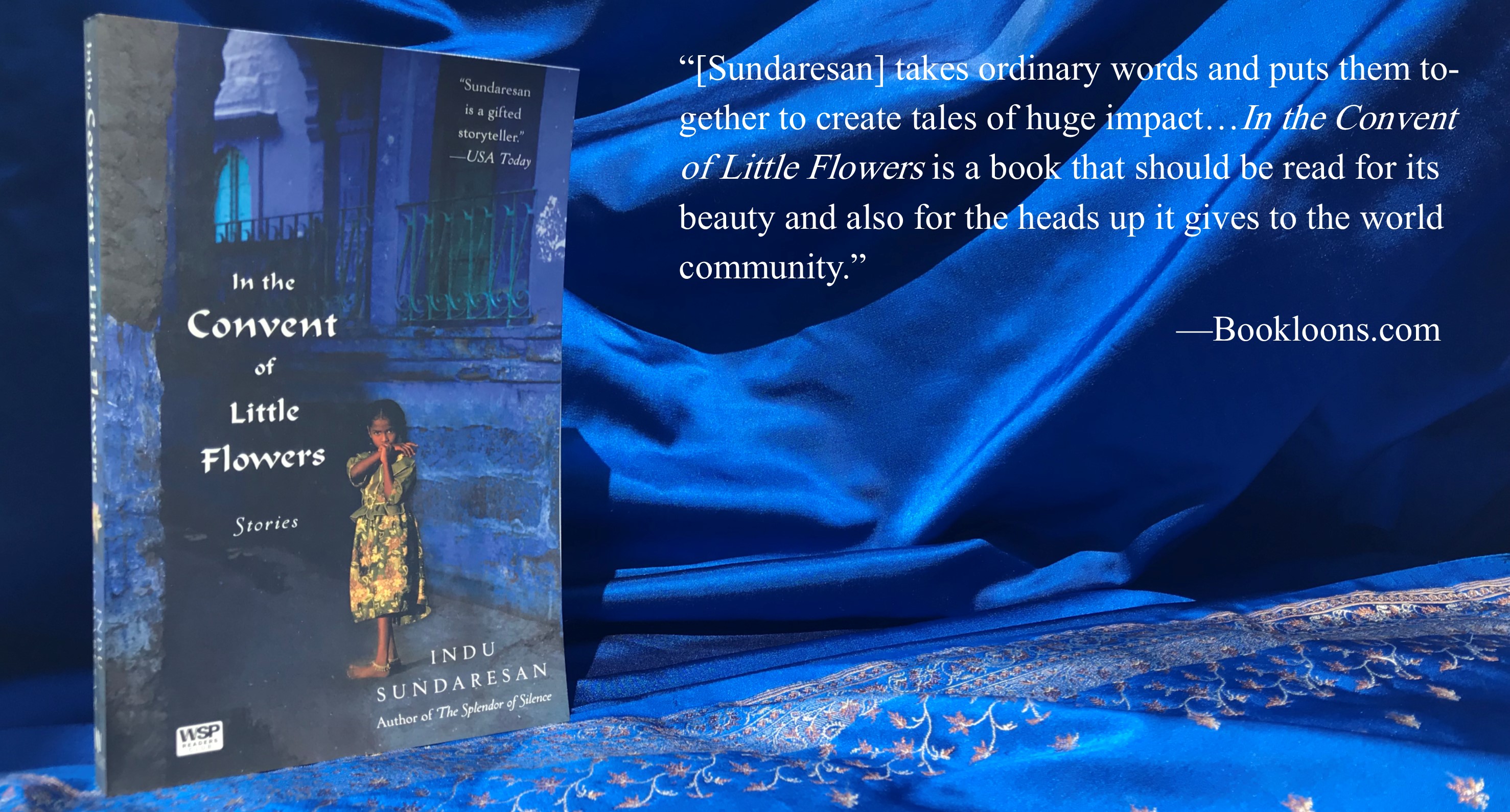Reading Group Questions from the paperback edition of In the Convent of Little Flowers.
1. In “Shelter of Rain,” why is Padmini so angry to hear from Sister Mary Theresa, the woman who practically raised her until her adoption at age six? What reasons does the nun give Padmini for her mother’s abandonment and neglect? How does Padmini feel about those reasons? Do you sympathize with her mother at all?
2. Indian culture has long emphasized the importance of respect for elders, particularly with regard to aging parents. In “Three and a Half Seconds” and “Bedside Dreams,” we witness the devastating effects of the rejection of this tradition. Why do Meha and Chandar ultimately choose death over asking for help or standing up to their cruel son, Bikaner? What does “Bedside Dreams” say about the effect of Western Culture on young Indians with elderly parents? Do you think the nameless narrator and her husband, Kamal, did in fact “go wrong” raising their twelve children to be cast off so readily?
3. Compare and contrast the way Payal’s grandmother in “Fire” and Kamal and his wife in “Bedside Dreams” are treated. Describe the situations these elderly characters face at the end of their lives and explain how they got there. Do you think they deserve their fates? Why or why not?
4. Banyan trees appear in several of the stories in this collection. Identify which stories this symbol appears in and discuss the ways in which the characters use the banyan tree. What do you think the tree symbolizes?
5. Though not all of the narrators in this story are women, the stories do seem to center on one or several women’s experiences. What do these stories tell you about the traditional roles of women in Indian culture? What is expected of women in their roles as daughters, sisters, wives and mothers? How do you feel about these expectations?
6. The idea of an arranged marriage often seems cruel to modern minds and hearts. But these stories portray another side. What are the benefits of an arranged marriage as experienced by the characters of In the Convent of Little Flowers? What are some of the detriments?
7. In “The Faithful Wife,” we follow a reporter back to the small rural village of his birth, where a twelve-year-old girl is about to be burned alive in the ancient (outlawed) tradition of Sati. Does the issue of Western encroachment upon Indian traditions drive the conflict here, or is this an example of age-old sexism mediated by evolved opinion? What do you think of Ram’s observation on (p. 58), that the villagers perform the Sati with “a vicious need to connect with the past, with a willing scapegoat?”
8. Why do the members of the Key Club stop seeing each other outside of their meetings? Why do they use false names, even though some of them have been friends since childhood? What does it mean to Ram that his wife, Sita, avoid choosing Sat as her mate, and how does this relate to her repeated choice of Vish? Do you think Ram is missing something important in this story?
9. Using these stories as examples, discuss the ways in which Western values and concepts have infiltrated and affected Indian culture. What aspects are new to India? What aspects have always been present, but are newly exposed by changing perspectives and ideas of what is acceptable?
10. In “The Most Unwanted,” Nathan struggles with feelings of shame and betrayal. His daughter has committed the ultimate sin—giving birth to a bastard and remaining unmarried. What is it that ultimately begins to heal the dull ache and bitter pain inside his chest?
11. In “Fire,” Payal says her grandmother “hides behind a strange and immovable logic.” (p. 88). Identify the ways in which this statement applies to other characters in the collection. Discuss what this really means and what effect, both positive and negative, this stance has on each story.
12. While many of these stories portray tragic lives with even more tragic endings, there is happiness found among the pages of this collection, too. Where do the women of In the Convent of Little Flowers find happiness? Compare and contrast these sources of joy with the ways in which modern Western women find happiness.
13. Which story did you most identify with and why? Do you think the challenges these women face are universal? Why or why not?


